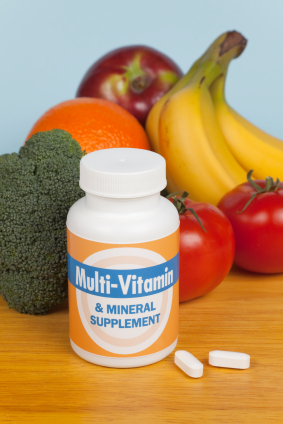Vitamins E and C for Alzheimer's
Combined use of Vitamins E and C Reduces the Risk of Alzheimer's disease in the Elderly By: Dr. George Obikoya
Alzheimer's disease (AD) remains a major public health threat in a society such as ours in which people are increasingly living longer. Recent research evidence showed that antioxidants protect the aging brain from oxidative damage linked to the disease processes characteristic of Alzheimer's disease (AD). This is good news for the millions of people worldwide that may go on to develop Alzheimer's disease - IF they do something about oxidative damage now.
Vitamin E is a dietary compound that acts as an antioxidant; scavenging toxic free radicals. Evidence that free radicals are linked to the disease processes in Alzheimer's disease has led to interest in the use of vitamin E to treat this disorder. Another extraordinarily promising vitamin is vitamin C. Also called Ascorbic Acid, Vitamin C is a water-soluble, carbohydrate-like substance. It is necessary in our diet and essential in a variety of metabolic functions. Vitamin C controls such metabolic functions as the synthesis of collagen (a protein important in the formation of healthy skin, tendons, bones, and supportive tissues) and in wound healing. It is important in the maintenance of the structural integrity of the blood vessels; metabolism of certain amino acids; and the synthesis or release of adrenal gland hormones. It may also play a role in protecting us against infection. A good liquid multivitamin will contain sufficient amounts of vitamins C and E.
Unlike most animals, we don't synthesize Vitamin C. Since it was first isolated in 1928, Vitamin C played a major role in preventing scurvy; a once-endemic disease characterized by debility, blood changes, spongy gums, and hemorrhages in the tissues of the body and has since been the object of continued active laboratory research.
A study published in the January 20, 2004 issue of Archives of Neurology has shown that using high-dose supplements of vitamins E and C (in combination) reduces the prevalence and incidence of Alzheimer's disease (AD) in the elderly. Vitamin E users in the study that took an individual supplement of vitamin E or a multivitamin containing more than 400 IU of vitamin E. Vitamin C users took at least 500 mg of ascorbic acid daily. The highest reduction in both prevalence and incidence of AD was seen in individuals that used vitamin E and C supplements in combination. The study showed there was no apparent protective effect with the use of vitamin C alone, vitamin E alone, with multivitamins alone, or with vitamin B-complex supplements. You have to ensure adequate levels of Vitamins C and E, and most multivitamins fall woefully short of the levels needed.
Citrus fruits and fresh vegetables are the best dietary sources of these vitamins. However, they don't contain enough of these vitamins to prevent AD. Furthermore, vitamin C is difficult to preserve in foods because it is easily destroyed by reactions with oxygen, especially in neutral or alkaline solution or at elevated temperatures.
The current recommended daily allowance (RDA) for vitamin E is 22 IU (15 mg), and for vitamin C (ascorbic acid), 75 to 90 mg. Multivitamin preparations typically contain the RDA, while individual supplements typically contain doses up to 1,000 IU of vitamin E and 500 to 1,000 mg or more of vitamin C (ascorbic acid). Vitamins E and C, therefore, offer protection against AD when taken together in the higher doses available from individual supplements or a high quality liquid multivitamin.
A good multivitamin is the foundation of health and nutrition. Take a look at our scientific reviews of many of the popular brands for factors such as ingredients, areas of improvement, quality level, and overall value. If you are looking for a high quality liquid multivitamin, we suggest that you take a look at the Multivitamin Product Comparisons.
References
Arch Neurol. 2004; 61: 82-88 01

